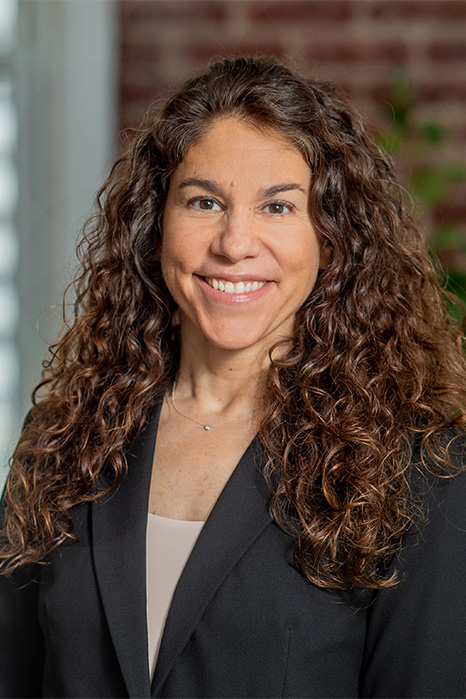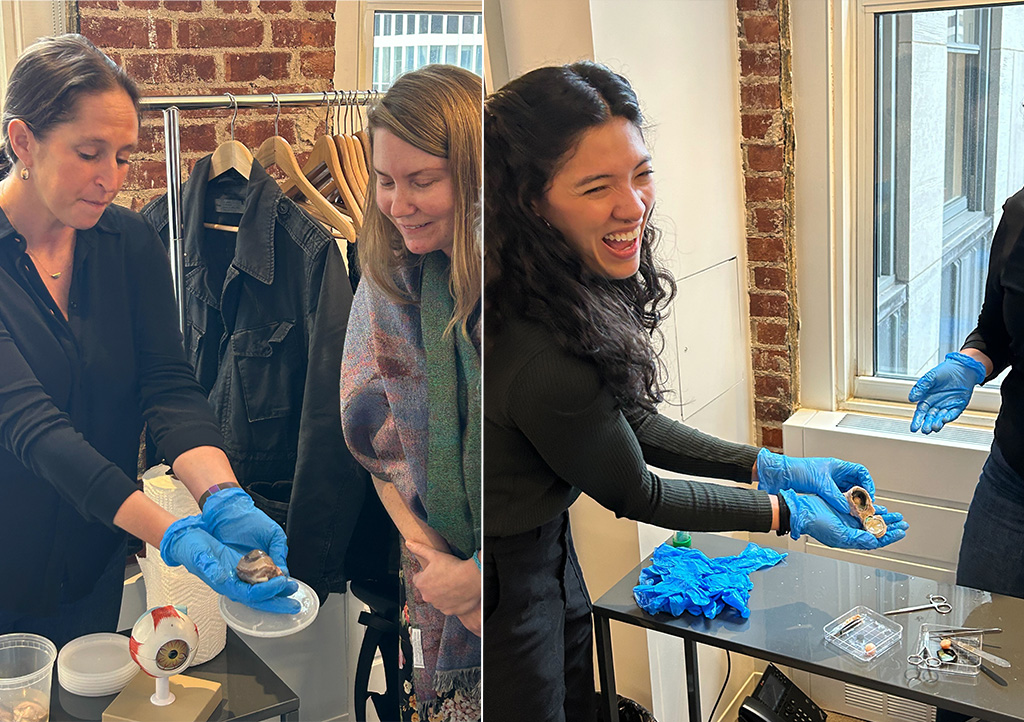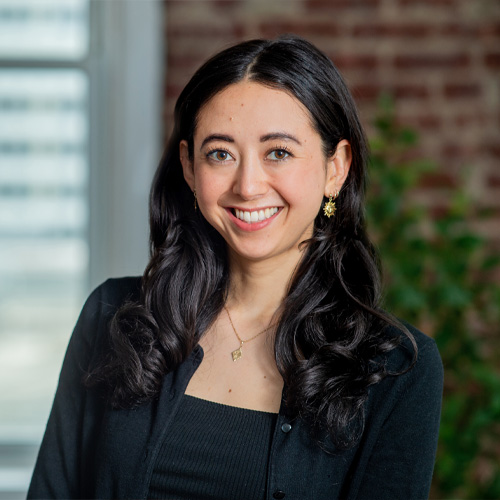Welcome to Brain Awareness Week, a global initiative celebrated every March dedicated to promoting public interest and support for brain science. The campaign—first launched in 1996 with support from the Dana Foundation—continues to garner support, attention, and participation from around the world and is now officially in its 29th year. The success of Brain Awareness Week would not be possible without the enthusiasm of its participants; but almost equally important has been the work of Kathleen Roina, who has overseen the campaign’s growth and expansion into more than 50 countries. Kathleen currently directs the Foundation’s Education program, working to support education both inside and outside the classroom to capture people’s interest and strengthen their knowledge of neuroscience and its relevance to their everyday lives.


How does Brain Awareness Week fit into the Foundation’s relatively new focus on neuroscience and society?
Kathleen Roina: The Foundation refined its mission area to Neuroscience & Society three years ago, with the goal of exploring connections between neuroscience and society’s challenges and opportunities to maximize the potential of the field to do good. And since it began in 1996, Brain Awareness Week has been a community-driven campaign. Its purpose has always been to encourage neuroscientists to step out of their labs and into their communities to talk to people of all ages and backgrounds about their research and its relevance to people’s everyday lives. Through Brain Awareness Week activities, neuroscientists not only educate, but also engage in conversations with public audiences and learn about the brain-related issues and topics that are of interest to them. Many neuroscientists participate in Brain Awareness Week events year after year, too, enabling them to build relationships with their communities. These meaningful connections help scientists think about their work in new ways that consider questions of societal importance, helping ensure that neuroscience research—and practice—progresses in ways that benefit the communities it serves. In this respect, Brain Awareness Week aligns closely with our new focus on neuroscience and society and has tremendous potential to help carry our mission forward throughout the world.
The Foundation’s work is organized around three program areas—Dana Education, Dana NextGen, and Dana Frontiers—which support education, training, and public engagement on neuroscience and society issues. Brain Awareness Week, with its emphasis on informal learning, is an initiative of the Dana Education program. Brain Awareness Week events—which include lectures and panels, school programs, museum exhibitions, brain fairs, lab tours, art and literature competitions, trivia nights, and town halls—aim to strengthen people’s knowledge of neuroscience and empower them to use that knowledge in their daily lives, which is a main objective of Dana Education. Many event organizers target K-12 students, also a priority audience of Dana Education, to not only capture their interest in neuroscience but also inspire them to pursue careers in the field.
That being said, Brain Awareness Week also contributes to the goals of our NextGen and Frontiers programs. It provides a wonderful training opportunity for early career neuroscientists. Many activities are spearheaded by undergraduate and graduate students, allowing them to develop their science communication skills with different audiences and age groups. Also, Brain Awareness Week event organizers are always looking for new and creative ways to reach their audiences, making the campaign an excellent testing ground for newer models of public engagement that aim to foster dialogue and mutual learning among participants.
What is the benefit of a broad awareness campaign like Brain Awareness Week that doesn’t target a specific disease or audience?
Because it covers “brain awareness” so broadly, Brain Awareness Week provides its participants with the flexibility to organize events on issues and topics that are of greatest interest and concern to their local communities, as well as to their organizations and institutions. This flexibility has been a strength of the campaign and remains part of the reason why Brain Awareness Week continues to flourish after so many years. It allows for the participation of a wide range of organizations and institutions, such as colleges and universities, K-12 schools and afterschool programs, museums, patient advocacy groups, science outreach organizations, government agencies, and more. The campaign allows these different types of institutions to tailor their events to the needs of their target audiences and to choose event formats that will be most effective in engaging and exciting them about the brain and the promise of brain research.
Are there certain topical trends you’ve seen in the last few years?
The biggest trend I’ve seen is a focus on mental health, which started during the Covid-19 pandemic and continues today. This trend further illustrates how Brain Awareness Week enables event organizers to respond to the needs of their communities and society more broadly. During the pandemic, organizers focused on topics such as stress, anxiety, depression, sleep, addiction, social isolation, and our increased use of digital technology, providing credible information and resources to their communities. They also provided coping strategies through events focused on mindfulness, meditation, yoga, exercise, and even music therapy. For example, in Brazil in 2021, there was a nationwide focus on “Nature and the Brain” with a series of events that encouraged people to spend more time outdoors and in nature because it’s been shown to alleviate stress, calm anxiety, and boost our moods.
Since the pandemic, there have been events in Ukraine for parents and caregivers that focus on the trauma of war and its impact on children’s mental health and brain development. In Texas, a Hispanic-serving university organized a series of campus-wide events, including workshops, interactive art exhibitions, and a social media campaign, to address the cultural stigma associated with mental health disorders that is often a hindrance to seeking treatment. These are just a few examples of how event organizers worldwide are helping their communities lead healthier, more productive lives through an increased understanding of the brain and brain health.
How does the Dana Foundation support Brain Awareness Week?
We support the outreach and engagement activities of Brain Awareness Week organizers through two grants programs serving different regions of the world: a partnership with the International Brain Research Organization (IBRO) supporting the United States, Canada, Latin American, Africa, and the Asia/Pacific region; and a partnership with the Federation of European Neuroscience Societies (FENS) supporting Europe. The goal of both programs is to expand the impact of Brain Awareness Week by reaching new countries and more diverse public audiences through the efforts of our grantees.
We also have an array of free handouts and resources available on our website, including lesson plans with ready-made classroom activities and downloadable fact sheets and puzzles. This year, we’re excited to share new resources from Dana Foundation grantees that would make wonderful additions to Brain Awareness Week programming:
- The Franklin Institute’s Neuroscience & Society Curriculum offering an in-depth focus on neuroscience through the lens of relevant societal issues, designed to be appropriate for grades 10-12
- Hands-on activities from the NISE Network’s Changing Brains project to engage audiences in reflection and conversation about future neurotechnologies
- The webinar series, Inside the Brain: A Lifetime of Change, from Knowable Magazine exploring brain development from childhood to late adulthood.
- The Dana Discovery Dialogues, a webinar series hosted by the Boston University College of Communications, that unpacks pressing and occasionally contentious topics in contemporary neuroscience
What has been one of your favorite Brain Awareness Week experiences, to date?
It’s hard to choose just one, but an event that I love attending each year is organized by BioBus in collaboration with the Greater NYC Chapter of the Society for Neuroscience. They quite literally bring neuroscience to the streets of New York City, organizing a large-scale public event at Adam Clayton Powell Plaza in Harlem. The event features hands-on activities, experiments, discussions, and performances led by scientists from BioBus, New York University, Mount Sinai, Columbia University, Rockefeller University, and City University of New York. It often includes one of BioBus’ mobile laboratories, which provide community members with intimate access to scientific research experiences in a low-pressure, high-engagement setting. Their approach of meeting people where they are is so effective in creating a welcoming environment that invites community members into a dialogue with scientists about how neuroscience relates to their lived experience.
Last year, I invited BioBus to come to our office and present a similar (but smaller scale!) event for Dana staff. So many of my colleagues work behind the scenes to support our coordination of Brain Awareness Week but don’t get to experience the events firsthand. It was so rewarding to bring Brain Awareness Week to them and provide them with the opportunity to participate in the fun and engaging activities that are a hallmark of the campaign. Just like the Brain Awareness Week events that take place worldwide, it was a great learning and community-building experience for us all!



